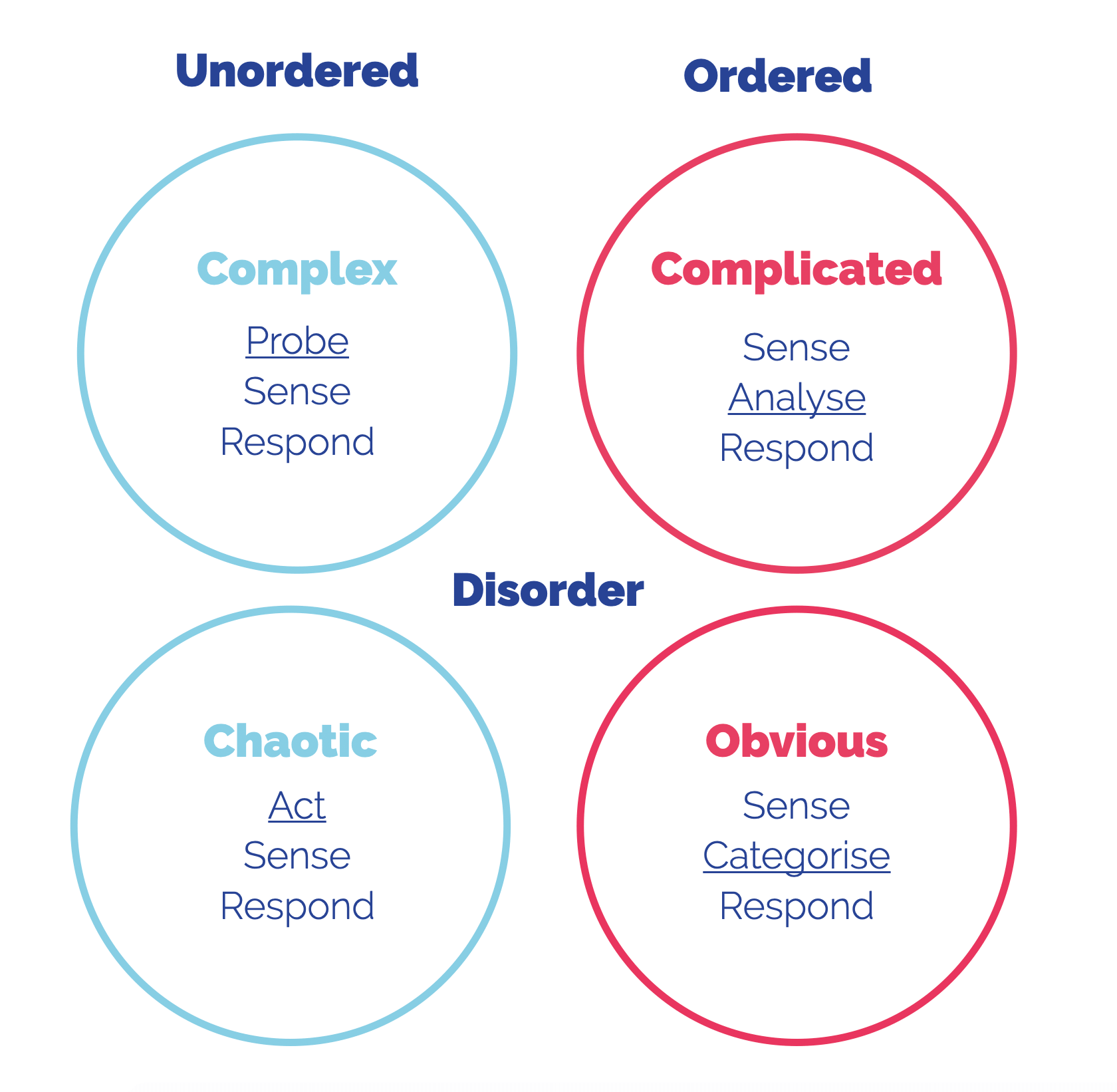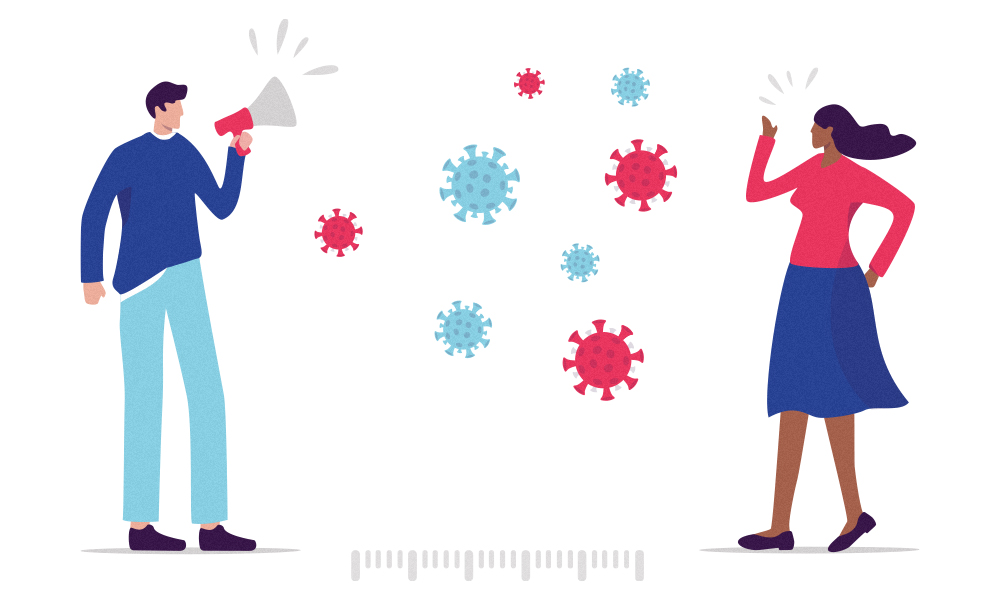Article
| by Sophia Charters 
Decision paralysis: how to make decisions during a time of crisis
This resource is part of Adapt to COVID-19.
Article
| by Sophia Charters 
This resource is part of Adapt to COVID-19.
![]()
Researchers estimate an adult makes upwards of 35,000 remotely conscious decisions each day and decision paralysis can affect us all, even at the best of times.
Sometimes when there is too much information available, it becomes increasingly difficult to choose the best course of action for your project or your organisation.
Sometimes it feels impossible.
Sometimes the decision you make is to avoid making a decision at all.

As a product studio with clients across a variety of industries, we’ve seen this happen with multiple businesses, regardless of their shape or size.
And quite often it’s happening for one of three reasons:
Now, most of us don’t have the luxury of time to think about how we make decisions, but it's perhaps not surprising to hear that researchers have discovered:
The way we make decisions in business can be optimised for specific contexts.
In the 90s, Dave Snowden developed The Cynefin (pron. kuh-nev-in) Framework. Drawing from research in systems theory, complexity theory, network theory and learning theories, the Cynefin framework defines the following four decision-making “domains: obvious, complicated, chaotic and complex.

The Cynefin Framework
Based on the characteristics of each of these domains, there’s an optimal approach to decision making.
In ‘obvious’ contexts, there are clear rules, standard operating procedures and best practices proven to predict the very clear cause and effect relationship. An example here could be a customer order, where the best approach to decision making is to find the proper rule and apply it. In this case, that rule is processing the order to fulfilment.
In ‘complicated’ situations, decisions require more analysis as there may be a range of correct answers. An example of this situation could be a UX project to improve an existing website platform for a discernible audience group. In this example data analysis is required to determine which actions will result in the best improvements.
The decision maker must analyse, using their experience, expertise & judgment to find the best choice.
In ‘chaotic’ situations, all bets are off. There is no cause and effect relationship at play. An example of a chaotic situation may be one where you are working to move your projects forward in an organisation that has just lost several members of the senior management team, or is undergoing restructure without the benefit of extensive planning. The good news in this example is that a quick decision - literally any decision – is the best course of action. Any decision will help to start anchoring the other variables to something that you can take forward and reassess.

In this domain, there are no right answers. Cause and effect is at play but can only be deduced in hindsight and the adage “we don’t know what we don’t know” summarises this domain perfectly.
The complex domain is where we have multiple audiences, unknown or emerging customers, external factors such as technology (or a global health pandemic!) that we don’t have control over. It's the area where we find most of our most exciting challenges.

Complicated and complex situations are similar in some ways, however there is a useful rule of thumb to help you identify which domain you are dealing with - if you need to make a decision based on incomplete data, you're likely to be in a complex situation.
Complex contexts are often unpredictable, and the best approach here is to “Probe – Sense – Respond."
Rather than trying to control the situation or insisting on a plan of action, it's best to be patient, look for patterns, and encourage a solution to emerge.
In complex situations, traditional waterfall management models (where requirements gathering, product design, implementation, verification and maintenance happen in a linear way) can actually contribute to decision paralysis as you’re waiting to try and have everything assessed and locked down prior to moving forward. In complex situations where the rate of change across variables is rapid, this might just never happen.
In this reality, the reality in which we all now find ourselves, ‘agile’ is not just a buzzword or the latest trend. It’s actually the only model that supports effective decision making.
And there are a few key reasons why…
Viewing a decision or solution as the final deliverable increases the pressure to ensure you’ve addressed every possible variation. This is where MVPs (minimum viable products) have great value because they remove the pressure of a single big decision. And this means that with each small step there is less responsibility, and therefore less fear of failure.
Working collaboratively with the relevant knowledge holders internally and partners externally will support your progress. Getting feedback early gives you and your team the opportunity to learn through the process while ensuring the solution can adapt to any internal and external changes.
By building upon the minimum viable solution, you’ll continue to gather and integrate feedback into each new iteration of the solution.

So now we know…
But how can we actually use this knowledge to overcome decision paralysis in our organisations? How can we influence the stakeholders who are blocking decision making progress?
Instead of feeling comfortable with the unknown, we as humans instinctively crave information that will bring a sense of order. The problem is that seeking more information often feels like forward movement. In reality, we’re delaying taking action because the information we need doesn’t exist or doesn’t exist yet.
Now, embracing uncertainty doesn’t mean throwing caution to the wind and choosing anarchy (although arguably that could be pretty fun). Embracing uncertainty means, being grateful that you are in a place where you can approach that uncertainty and use it or influence it. And this is a handy way in which you can frame it for others around you.
Uncertainty creates discomfort and forces us to explore options that we may not have considered just months before. Netflix famously used the uncertainty of changing market conditions to create new business models that may have once seemed unthinkable.
There are rarely any “right” answers in business. But making a decision, even if it’s deemed imperfect later, has the benefit of reducing uncertainty for the rest of your company or team. Some people may be so caught up in the fear of failure at an individual level that they need a reminder of the wider ecosystem they’re part of and are capable of helping.
![]()
What does your customer experience during a crisis look like?
What do your customers want from you?
What’s the best way for you to deliver a top-notch customer-centric journey even during a World pandemic?